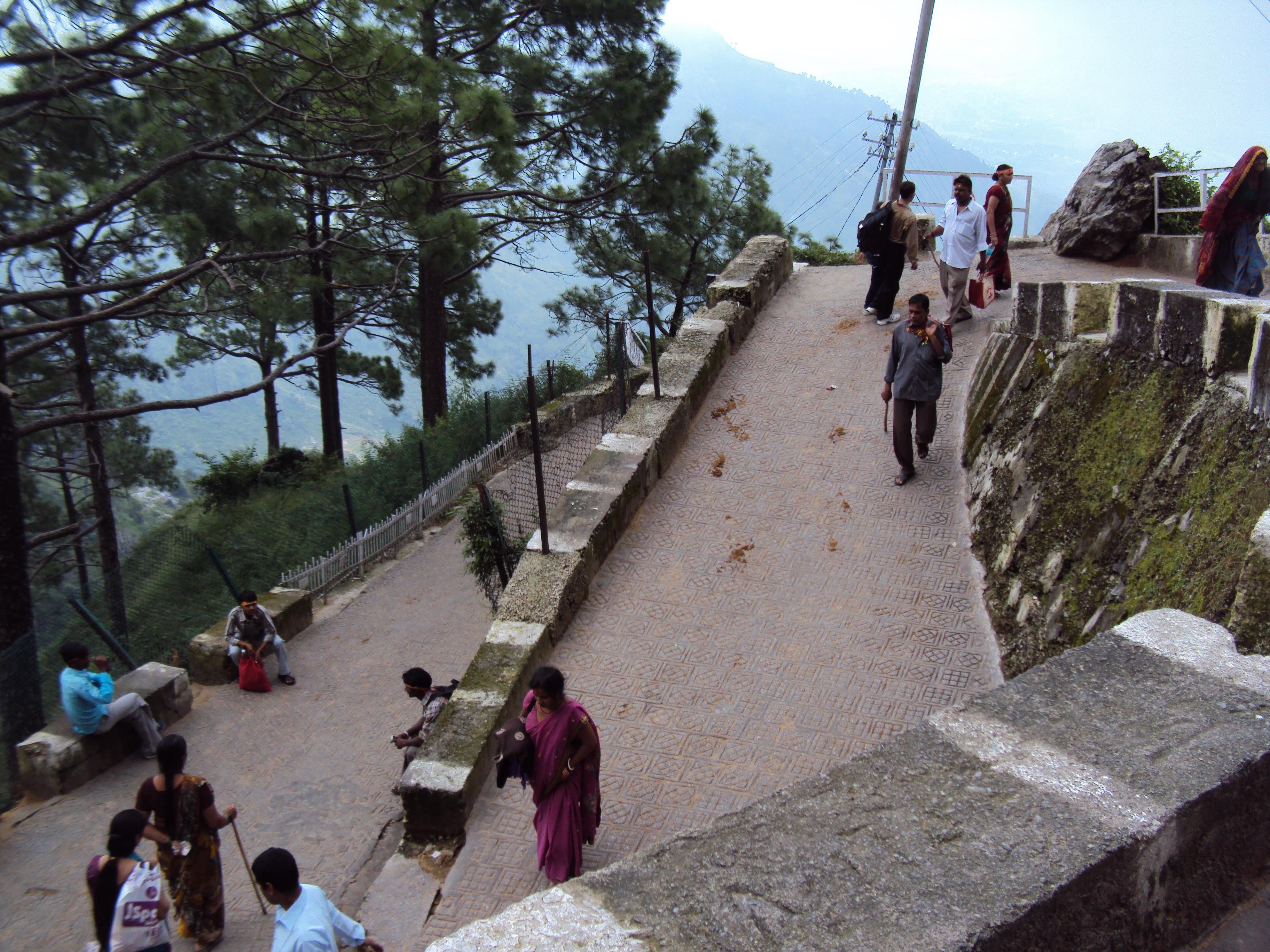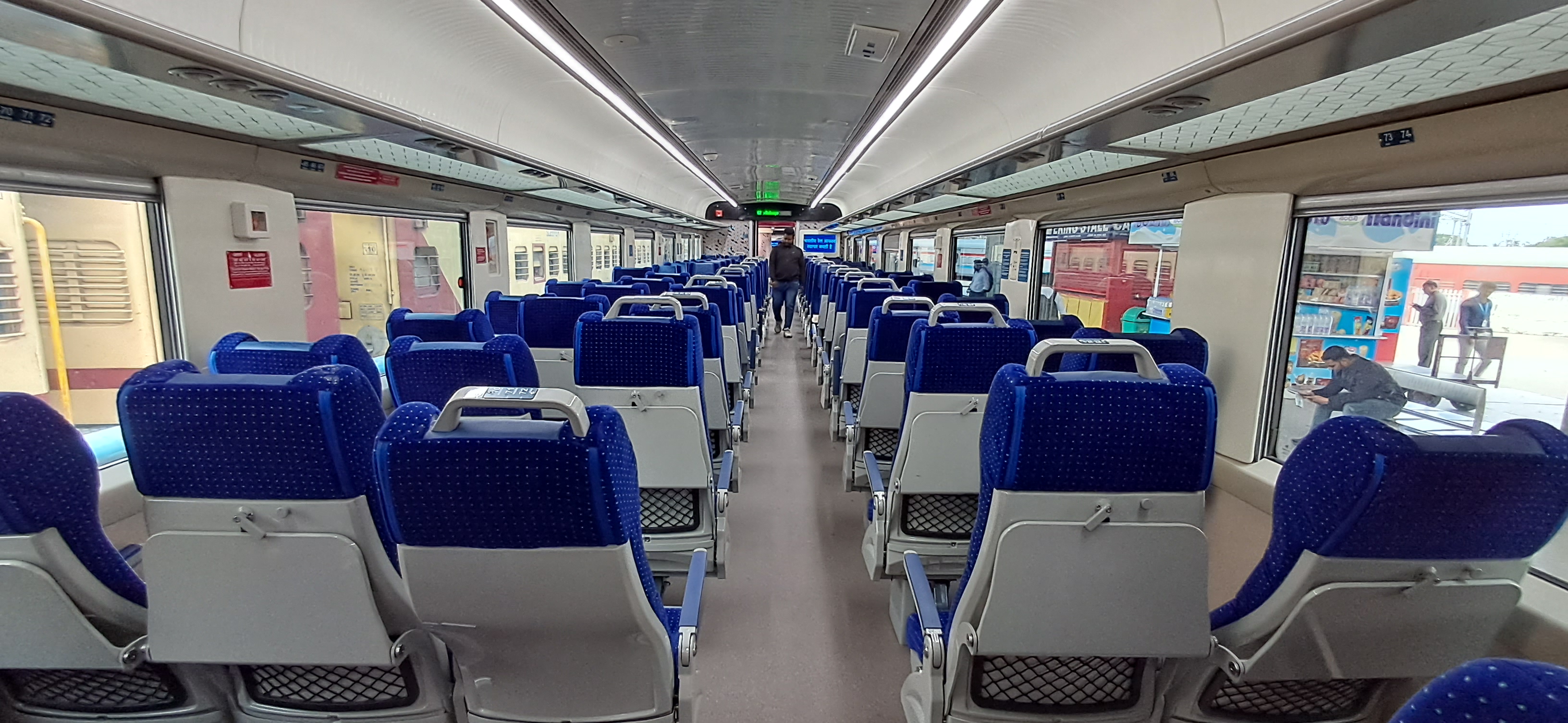
Vaishnodevi Temple, Aerial View
Nitin3233, CC BY-SA 3.0, via Wikimedia Commons
Introduction
 |
| Vaishnodevi Temple, Aerial View Nitin3233, CC BY-SA 3.0, via Wikimedia Commons |
India is a land where spirituality and travel often merge into unforgettable experiences. One of the most revered destinations for millions of devotees is the Vaishno Devi Temple, located in the Trikuta Mountains of Jammu and Kashmir.
Every year, millions of pilgrims from across the country and beyond undertake this sacred journey to seek blessings from Mata Vaishno Devi, considered one of the most powerful manifestations of the Divine Mother.
What makes the Vaishno Devi pilgrimage truly unique is not only the spiritual aura of the temple but also the mountain track journey leading to it, the deep religious significance, and the local food traditions that flavor the experience. In this essay, we explore everything a pilgrim or traveler should know—from the temple’s importance to the journey itself, how to reach there, and the spicy delights of the region.
If any tourists need any help, here is the official website of the government of India to guide the domestic and foreign tourists: India Tourism Development Corporation (ITDC)
| Vaishnodevi trail from Katra Vinayaraj, CC BY-SA 3.0, via Wikimedia Commons |
Nestled at an altitude of about 5,200 feet above sea level, the Vaishno Devi Temple lies in a sacred cave within the folds of the Trikuta Hills, near Katra in Jammu and Kashmir.
Unlike many other temples built as grand structures, Vaishno Devi’s sanctum lies within the natural womb-shaped cave, housing the three Pindis—symbolic stones representing Maha Kali, Maha Lakshmi, and Maha Saraswati.
For Hindus, the pilgrimage to Vaishno Devi is among the most auspicious yatras, said to grant the wishes of those who visit with devotion.
It is often said: “Chalo bulawa aaya hai, Mata ne bulaya hai”—meaning, “The call has come; the Mother Goddess has invited you.” This captures the essence of the pilgrimage, where devotees believe one only arrives when blessed with Mata’s invitation.
Religious Importance of Vaishno Devi
The Legend of Mata Vaishno Devi
According to mythology, Vaishno Devi was an incarnation of the collective energies of Goddesses Kali, Lakshmi, and Saraswati. She was born to help restore dharma and annihilate evil. Legends narrate that she performed penance in the Trikuta mountains and later vanquished the demon Bhairon Nath, who had been pursuing her. Even after slaying him, she granted him liberation, and his temple near the main shrine remains part of the pilgrimage.

IndiGo Airbus A320 VT-ITK at Mumbai Airport
Premkudva, CC BY-SA 4.0, via Wikimedia Commons

Premkudva, CC BY-SA 4.0, via Wikimedia Commons
Why Pilgrims Visit
-
Spiritual Fulfillment: Devotees believe that prayers offered at Vaishno Devi reach the Goddess directly. Wishes for health, prosperity, and peace are commonly sought.
-
Religious Merit (Punya): Undertaking the trek is itself considered an act of devotion, with every step on the mountain believed to earn spiritual merit.
-
Cultural Unity: People from diverse backgrounds, castes, and regions travel together, creating an atmosphere of shared faith.
Festivals and Celebrations
-
Navratri: The nine nights of Navratri see the maximum footfall, with the temple illuminated and hymns sung in honor of the Goddess.
-
Diwali and New Year: Pilgrims often choose these times to begin anew with blessings.
-
Chaitra Navratri Mela: A grand fair celebrated in spring, attracting thousands of devotees.

Vaishnodevi trail from Katra
Vinayaraj, CC BY-SA 3.0, via Wikimedia Commons
The Pleasant Journey on the Mountain Track
Vinayaraj, CC BY-SA 3.0, via Wikimedia Commons
Unlike many temples accessible by direct road or cable car, Vaishno Devi requires a mountain trek of about 13 kilometers from the base town of Katra to the holy cave.
This trek itself is a significant part of the pilgrimage, with the journey symbolizing devotion, endurance, and faith.
Starting Point: Katra
The town of Katra serves as the gateway to Vaishno Devi. Pilgrims register here before embarking on the yatra. The narrow bazaars of Katra buzz with activity, selling coconuts, chunnis (red scarves), and offerings for Mata.

Vaishnodevi trail from Katra
Vinayaraj, CC BY-SA 3.0, via Wikimedia Commons
The Trek Experience
Vinayaraj, CC BY-SA 3.0, via Wikimedia Commons
-
Track Layout: The trek is about 13 km uphill. The path is well-paved, illuminated, and dotted with rest stops. Signboards help pilgrims gauge their progress.
-
Stops Along the Way:
-
Banganga: The spot where Mata quenched her thirst by creating a spring. Pilgrims often stop here to refresh themselves.
-
Charan Paduka: A site believed to bear the footprints of Mata.
-
Ardh Kuwari: A midpoint cave where Mata meditated for nine months. Pilgrims often rest here before continuing.
-
Sanjhichhat: The highest point before descending slightly to the holy cave. From here, views of the valley below are breathtaking.
-
-
Facilities: Drinking water taps, eateries, medical stations, and shelters are available along the route.
-
Pilgrim Atmosphere: The trek resounds with chants of “Jai Mata Di!” which both motivate and energize pilgrims.
Options for Different Travelers
-
On Foot: The traditional way, rewarding and immersive.
-
Ponies and Palkis: For the elderly or those unable to walk long distances.
-
Helicopter Service: Available from Katra to Sanjhichhat, reducing the trek to just 2.5 km.
-
Battery-Operated Vehicles: Offered for differently abled or senior citizens.
Night Trekking
Many devotees prefer to walk at night, when the track is cooler, quieter, and beautifully lit. The sight of thousands of lamps and the chorus of devotional songs create an atmosphere unlike any other.
How to Reach Vaishno Devi
By Air
The nearest airport is Jammu Airport, about 50 kilometers from Katra. Regular flights connect Jammu to major Indian cities like Delhi, Mumbai, and Kolkata. From Jammu, taxis and buses are available to reach Katra.

Chair Car layout of the Vande Bharat Express trains
Sameer2905, CC BY-SA 4.0, via Wikimedia Commons
By Rail

Sameer2905, CC BY-SA 4.0, via Wikimedia Commons
The Shri Mata Vaishno Devi Katra Railway Station is directly connected to many cities, offering pilgrims a smooth journey to the starting point.
For years, Jammu Tawi was the main railhead, but now Katra itself is accessible by train, making the yatra more convenient.
By Road
Katra is well connected by road to Jammu, Udhampur, and other nearby cities. State-run buses, private coaches, and taxis operate regularly. The road journey through Jammu’s hilly terrain is scenic, lined with pine forests and mountain streams.
Local Spicy Food Near Vaishno Devi
Food is an integral part of the pilgrimage. The region around Katra and Jammu offers a mix of traditional Dogri cuisine and broader North Indian flavors. Spices are generously used, creating dishes that warm the soul—perfect after a long trek.

Rajma Chawal
Shreya151994, CC BY-SA 4.0, via Wikimedia Commons
1. Rajma Chawal

Shreya151994, CC BY-SA 4.0, via Wikimedia Commons
The undisputed favorite of the region, Rajma Chawal (kidney beans with rice) is more than just a dish—it’s an emotion. Cooked with local spices and thick gravy and served with fluffy rice, it provides both comfort and energy.
2. Kaladi Kulcha
A local specialty, Kaladi is a traditional Dogri cheese made from cow or buffalo milk. Pan-fried until crisp, it is stuffed in kulchas (bread) with onions and chutney. The taste is smoky, spicy, and utterly unique to Jammu.
3. Dum Aloo
Potatoes cooked in a spicy yogurt-based gravy, Dum Aloo is a Kashmiri influence that has become part of local menus. Rich in flavor, it pairs beautifully with rice or chapatis.

Chole Bhature, a popular North Indian dish
পাপৰি বৰা, CC BY-SA 4.0, via Wikimedia Commons
4. Chole Bhature and Poori Chole

পাপৰি বৰা, CC BY-SA 4.0, via Wikimedia Commons
Spicy chickpeas served with deep-fried bread are common roadside offerings for pilgrims. Perfect for a hearty breakfast before the trek.
5. Street Snacks
-
Gol Gappe (Pani Puri): Spicy, tangy, water-filled crisp puris.
-
Aloo Tikki: Spiced potato patties served with chutneys.
-
Pakoras: Hot, deep-fried fritters—ideal with masala chai.
6. Sweets
To balance the spice, pilgrims often indulge in Patisa (Soan Papdi), Jalebi, and Kheer. These are available in Katra’s bustling bazaars.
Food and Hospitality During the Yatra
Along the trekking route, numerous langars (community kitchens) serve free vegetarian food, offered as prasad by devotees and organizations. Simple meals of rice, dal, and sabzi keep energy levels up. Eateries along the way sell parathas, rajma chawal, and piping hot tea—all vegetarian, in keeping with the sanctity of the pilgrimage.
Responsible Pilgrimage
As with all spiritual journeys, respect and mindfulness are essential:
-
Avoid littering on the trek; use designated bins.
-
Maintain silence in the cave sanctum.
-
Assist elderly or weaker pilgrims if possible.
-
Dress modestly and respect local customs.
-
Remember, the journey is not only physical but also spiritual.
Sample 3-Day Itinerary for Vaishno Devi Pilgrimage
Conclusion: The Divine Journey
The Vaishno Devi Temple is not just a religious destination—it is an experience of faith, endurance, and community. The mountain track challenges and inspires, the chants of “Jai Mata Di” uplift spirits, and the sight of the sacred cave fills hearts with devotion. Add to this the warmth of spicy local Dogri and North Indian food, and the pilgrimage becomes a complete journey—of body, mind, and soul.
For many, the yatra is not about reaching the cave alone, but about every step that leads to it. With each chant, each meal, and each shared smile along the way, Vaishno Devi teaches the essence of devotion and humanity.
No comments:
Post a Comment